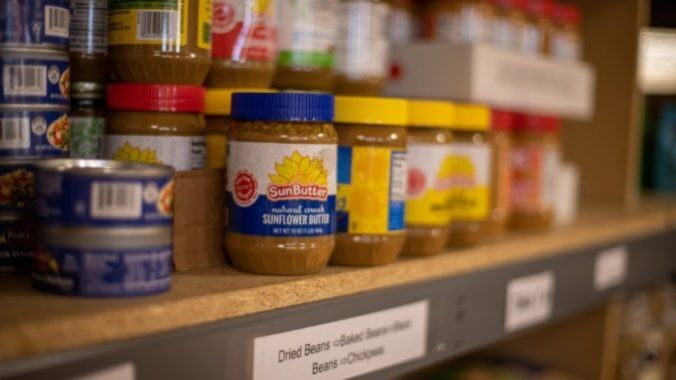Let’s Support Our Local Food Pantries After the Holidays Too
Photo by Aaron Doucett/Unsplash Food Features food politics
During the holidays, many of us start to reflect on how we can be better neighbors and how we can support our communities. Those first few snowflakes, the twinkling lights, the home-cooked meals shared under the glow of the menorah or Christmas tree—something about it makes us want to extend a hand to those who may be struggling during the holiday season.
Participating in holiday food drives can be an efficient way to help people in our community, and as a result, many food banks and pantries see an uptick in giving around the holiday season. Whether you’re donating non-perishable food or just sending some of your dollars to a food bank, these actions can ensure a family in your community has enough food on their table this time of year.
But all too often, once the festive days of December fade into the grey days of January and we’re trying to recoup the financial losses we’ve incurred from the past month or two, those donations drop off. Kay Carter, CEO of Second Harvest Food Bank of Metrolina, told Real Simple, “Giving is extremely strong during the holidays and can decline during spring and summer, the time when we most need the support.”
Members of our communities aren’t just struggling during the holiday season. The USDA reports that in 2021, 13.5 million households were food insecure, meaning that they struggled to gain access to healthful, nutritious and adequate food at some point in the year due to a lack of resources. That’s over 10% of the U.S. population, which means a lot of families are struggling with consistent food access throughout the year—not just during the holiday season.
Giving during the holiday season is commendable, and it’s a great way to extend support during a special time of year. But we shouldn’t limit our giving to November and December when there are members of our communities who are going hungry at other points in the year. When we make our plan to give during the holidays, perhaps we should think about how we can support our local food banks and pantries on more of a regular basis.
It’s no secret that the emergency food system in the U.S. is problematic in many respects. The food banks and pantries that many rely on now sprang from a failure of policy during the Reagan administration when the government pulled back on assistance programs that had previously helped families put food on their tables. Food banks were never meant to be a permanent solution, but unfortunately, even after decades of problematic policy, many people in our communities are still forced to rely on them. Creating enjoyable, culturally appropriate meals from the non-perishable foods found in food pantries can be difficult—oftentimes, those who use food pantries can’t even choose the foods they want and are instead relegated to whatever’s left for them.
This doesn’t mean we shouldn’t support our local food pantries—it just means we should be more thoughtful about how we extend a helping hand. Are we doing it to feel better about ourselves, or are we truly aiming to extend a hand to those in need? If we’re going for the latter, perhaps we can be more strategic about our giving by making contributions at several points during the year, not just during the holidays. Maybe we can ask our local food banks what specific foods or resources they’re looking for. And, perhaps most importantly, we can vote for politicians who support expanding food assistance programs so our friends and neighbors have more access to the foods they want to buy—not just the food that’s given to them.
For many, the holidays are a time of giving, of extending a hand to neighbors. But if we want to build stronger communities, we should keep that energy year-round.
Samantha Maxwell is a food writer and editor based in Boston. Follow her on Twitter at @samseating.